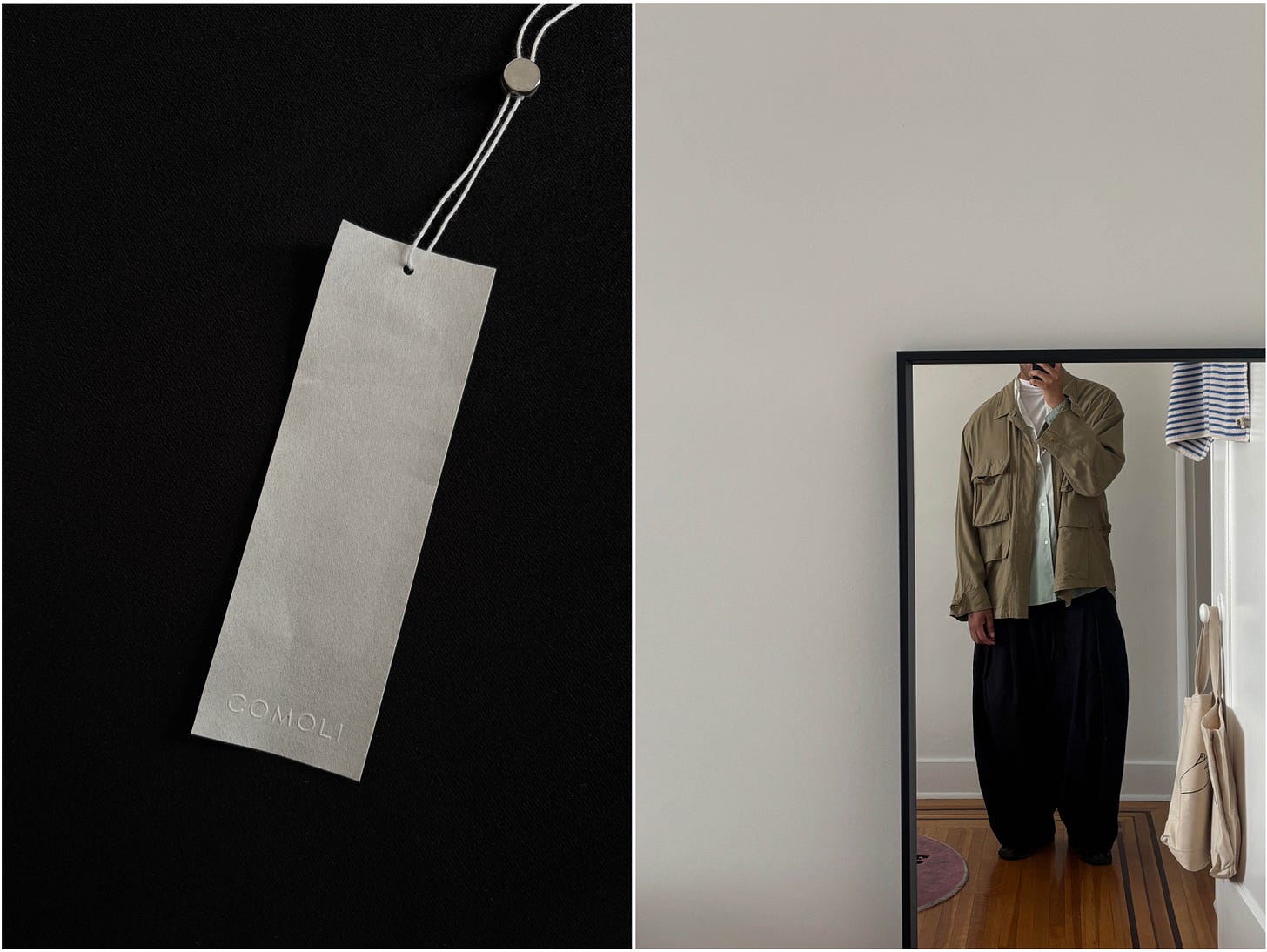Cult From A Different Cloth
Quiet excellence. An ode to Comoli.
Before We Begin —
In case you’re reading Duchump for the first time, or you’ve been MIA, you can catch up on my latest work — the last three posts are just below:
I’ve also made a new playlist that you can listen to on Spotify and Apple Music. It’s meant for quieter days.
There’s a lot happening behind-the-scenes right now, so there is a reason behind the slowdown of posts recently. Expect a few new interviews this month, along with some longer posts focusing one a single subject, brand, etc.
Please consider leaving a like and sharing this publication if you enjoyed reading this article, found it informative or fun, or if it simply helped pass the time.
Thank you for your support. Any and all feedback is appreciated.
Prologue —
There are moments in our lives that happen spontaneously, on the Lord’s dime, and leave you with an entirely changed perspective on things. It could be finding $80,000 on the ground, suddenly getting served with divorce papers, or in my case — purchasing my first Comoli piece from Neighbour. To be clear, I’m not speaking from experience for the other two examples, but this brand did leave my bank account absolutely devastated for a minute.
Some thought I had joined a cult, others thought I was having an ongoing aneurysm as all I could talk about for a few weeks — ok, maybe a few months — was, and still is, Comoli. The thing is, this brand is everything I’ve ever asked for. I did break the bank a few times. The cost per wear? Totally worth it. I’m basically making money now with how often I’m wearing each piece.

Now, you may be wondering what all the hoopla is and why I keep rambling on in almost every article about this one brand, even though the majority of their garments are mostly black. As someone who’s loved Japanese fashion for years now, I can tell you that it hasn’t always been all sunshine and rainbows for individuals with my body type.
Whether it’s self-diagnosed body dysmorphia, or simply waking up on the wrong side of the bed — I’d have days where I wasn’t the biggest fan of my body. Before finding brands like Graphpaper and Comoli, my love for Japanese fashion only added to the internal conflict as sizing wouldn’t always be the most inclusive. You would see massive labels like Comme des Garçons release some of the most beautiful pieces — but I’d be too afraid to try anything on since my inner saboteur would tell me that it would fit like a latex bodysuit on me. Sizing would be inconsistent, uncomfortable, unflattering.



